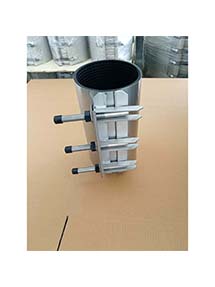compressor high pressure relief valve
Understanding High Pressure Relief Valves in Compressors
High pressure relief valves (HPRVs) play a critical role in the safety and efficiency of compressor systems. Compressors are widely used in various industries, ranging from manufacturing to refrigeration. They are essential for maintaining a pressure differential, which allows for the movement of gases or liquids. However, with their operation comes the risk of excessive pressure build-up, which can result in equipment damage or catastrophic failures. This is where high pressure relief valves come into play.
Function and Importance
The primary function of a high pressure relief valve is to release excess pressure from the compressor system. This is crucial because when the pressure exceeds a predetermined limit, it can lead to mechanical failures, unsafe conditions, and even explosions. The relief valve acts as a safeguard, ensuring that the system remains within its designed pressure limits.
High pressure relief valves are vital for protecting both the equipment and the personnel working with or around the compressor. They are designed to open automatically at a specified pressure, allowing for the safe discharge of gases or fluids. This automatic function is essential, as it eliminates the need for manual intervention during a pressure surge, thereby reducing the risk of human error.
Types of High Pressure Relief Valves
There are various types of high pressure relief valves, each designed for specific applications and operational parameters. The most common types include
1. Spring-loaded Relief Valves These are widely used due to their simplicity and reliability. They operate based on a spring mechanism that holds the valve closed until the pressure exceeds the set point, at which point the valve opens.
2. Pilot-operated Relief Valves These valves use a smaller pilot valve to control the larger main valve. They are ideal for systems that require precise pressure control and can handle larger flow capacities.
compressor high pressure relief valve

3. Balanced Relief Valves These valves are designed to minimize the effects of backpressure on their sealing mechanisms, ensuring that they open reliably under varying conditions.
Installation and Maintenance
The installation of high pressure relief valves is a critical process that demands careful consideration. Proper placement is essential for the effective functioning of the valve. It should be installed as close to the compressor outlet as possible to ensure that it can respond quickly to pressure changes. Additionally, it should be oriented correctly with respect to the flow direction to prevent any malfunctions.
Regular maintenance is another crucial aspect of ensuring that high pressure relief valves operate effectively. This includes routine inspections, testing, and calibration to confirm that the valve opens at the specified pressure. In some cases, valves may require replacement due to wear and tear, corrosion, or other damage that can impede their functionality. Keeping a maintenance log and adhering to industry standards can help prevent unforeseen failures.
Compliance and Standards
High pressure relief valves must comply with various industry standards and regulations, such as those set forth by the American Society of Mechanical Engineers (ASME) and the American National Standards Institute (ANSI). These standards dictate the design, manufacturing, testing, and installation of relief valves to ensure safety and reliability.
In many sectors, including oil and gas, chemical processing, and HVAC, the use of compliant high pressure relief valves is not just advisable but often mandatory. Companies must ensure that their equipment meets or exceeds these standards, as non-compliance can lead to significant legal and financial repercussions.
Conclusion
In conclusion, high pressure relief valves are a fundamental component of compressor safety systems. They provide an essential service in preventing excessive pressure buildup, thereby safeguarding both equipment and personnel. Understanding the intricacies of these valves, from their types to their maintenance, is critical for anyone involved in the operation and management of compressor systems. By adhering to standards and regular practices, industries can ensure the longevity and safe operation of their compressors, minimizing risk while maximizing efficiency.
-
The Smarter Choice for Pedestrian AreasNewsJun.30,2025
-
The Gold Standard in Round Drain CoversNewsJun.30,2025
-
The Gold Standard in Manhole Cover SystemsNewsJun.30,2025
-
Superior Drainage Solutions with Premium Gully GratesNewsJun.30,2025
-
Superior Drainage Solutions for Global InfrastructureNewsJun.30,2025
-
Square Manhole Solutions for Modern InfrastructureNewsJun.30,2025
-
Premium Manhole Covers for Modern InfrastructureNewsJun.30,2025
